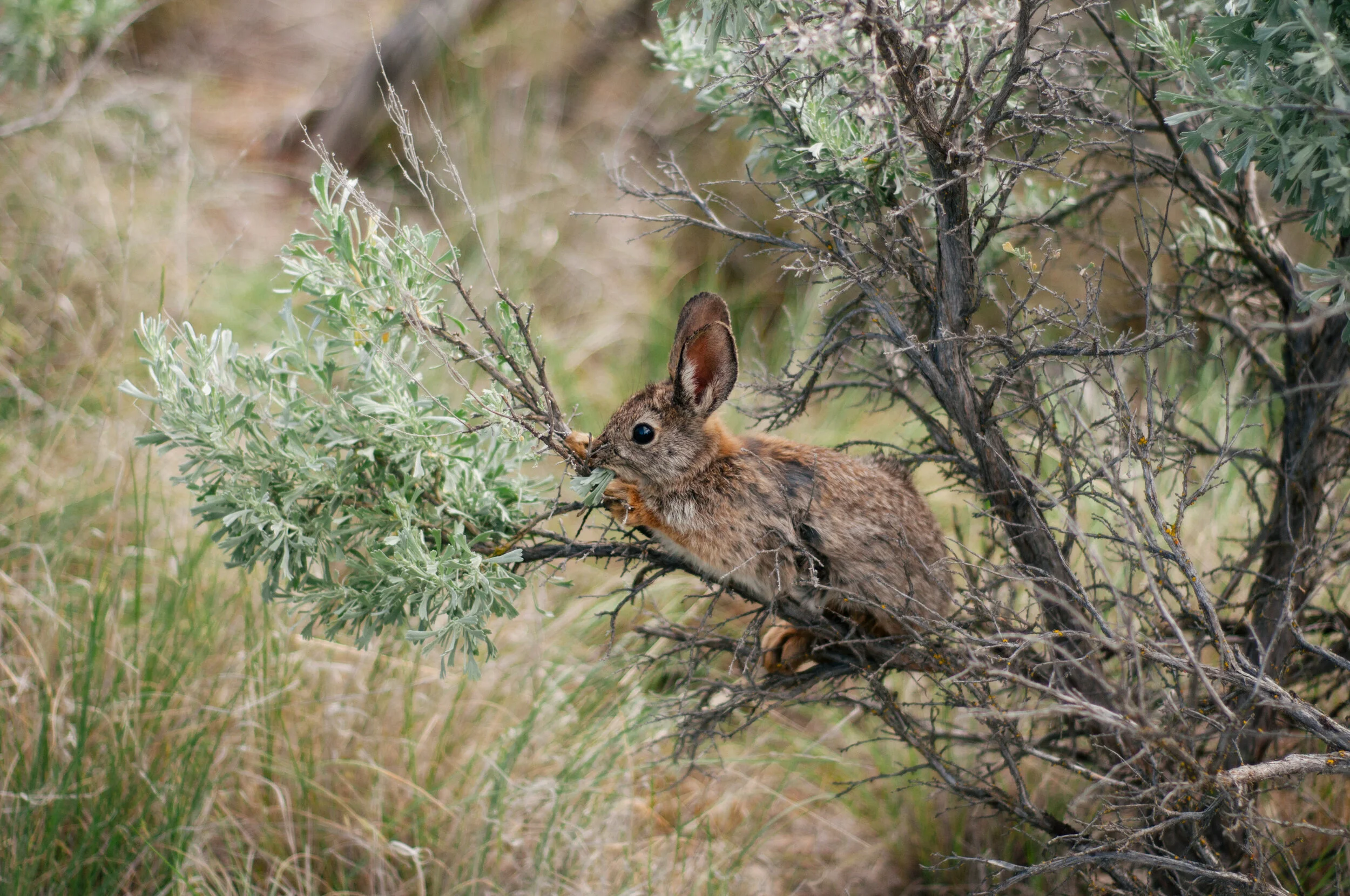By Emily Crabill, Stewardship Program Volunteer
Participating in the adventures of field science as volunteer with Stewardship has taken me across the state, from Port Susan Bay to Moses Coulee. The experiences have been great opportunities to learn about the important and innovative studies we are doing at our preserves and a way to contribute to the bigger picture of conservation.
Midnight Marsh Madness
On a cold October night at around 10 p.m., long after sunset, I found myself geared up in waders, warm layers, and a headlamp. I stepped out into Port Susan Bay following carefully behind Puget Sound Conservancy staff members Amber Parmenter, Molly Bogeberg, and Randi Shaw, along with Amber’s husband Brian. Not your typical start to a day in the field, especially as a volunteer.
Throughout the night, with low tides and hunters fast asleep, we safely and successfully installed four snow geese exclosures.
Installing the snow goose exclosure at Port Susan Bay Preserve. © Emily Crabill/TNC volunteer
At Port Susan Bay every winter we see the thousands of snow geese, but we do not yet understand their impact on the marsh vegetation. (Learn more about snow geese.) Each exclosure consists of four large PVC pipes pounded two feet into the ground with two rows of wire threaded through, to result in a fenced-in square area that the geese will avoid. By installing these exclosures, we will be able to see how plant persistence in these areas compares to vegetation outside the exclosure, where they will graze and stomp to their heart's content.
Expecting the pounding of the PVC pipe to be the most difficult part of the job, we were happily surprised to find this the most satisfying task. It was threading the wire through that presented the most difficult challenge - along with wiggling and dancing ourselves out of any accidental sinking into deep pockets of mud. We came prepared for the dark, cold and wet environment, and although some of us had numb fingers and toes by night's end, our spirits were high. Amber’s husband was the star of the evening: he kept us smiling and laughing no matter how numb. Shortly after 2 a.m. we finished up our last enclosure and headed back to the car and home.
This important study contributes to the ongoing work at Port Susan Bay and plays a key part in contributing to our understanding of marsh dynamics and contributing influences on their function and resilience.
Innovative Restoration with Energetic Women
Meanwhile, across the state at Beezley Hills, Claire Kurlycheck was preparing for the installation of a pilot study as part of the Conservancy’s Sagebrush Sea Initiative’s Innovative Restoration Strategy. This multi-state study expansion of an original Conservancy Oregon research effort (then called Precision Restoration), is testing the efficacy of Herbicide Protective Pods (HPP), to increase seed germination rates for plants in arid land environments.
Gridding out the plots for Herbicide Protective Pod testing. © Emily Crabill/TNC volunteer
In areas dominated by invasive cheatgrass, wildfire not only wipes out native vegetation, the post-burn site condition often favors the return of cheatgrass over native species. It’s important to quickly take steps to 1) control cheatgrass’s return and 2) establish native vegetation.
The HPPs we are testing protect desirable native bunchgrass seeds from the effects of pre-emergent herbicide aimed at preventing cheatgrass, allowing two important restoration steps to happen in one go. This experimental study is an opportunity to measure how effective the HPPs can be in germinating native grasses and thus restoring the shrub steppe environment. The greater hope is if these pods work, then this technique can be scaled up for use across shrub steppe and arid grasslands in the US.
Planting the pods in the grids. © Emily Crabill/TNC volunteer
On November 13th, it came time for the field installation. I met staff members Claire Kurlycheck, Randi Shaw, and Zaya Tumurkhuyag at our study location in Beezley Hills. We started the day off getting nice and warmed up with some gentle raking to expose some of the bare soil. From there we measured and marked our plots, 30 in total. Then we randomly assigned a treatment to each plot:
HPP & Herbicide
HPP & No Herbicide
Bare Seed & Herbicide
Bare Seed & No Herbicide
Control & Herbicide
Control & No Herbicide
After a lunch break we worked to finish the treatment combinations for each plot, taking care to be consistent and equal with each one. While sunlight ran out before the work did, nonetheless it was a great day of field science. Thanks to Claire for coming back the next day to bring it to the finish line. The next steps in this study will come in the Spring and Summer of 2020 when we will return to the site for monitoring. Wish those HPPs luck!
Emily Crabill was our Volunteer of the Year for 2018
Banner photo snow geese in the Skagit Delta © Michael McAuliffe, volunteer photographer.



























